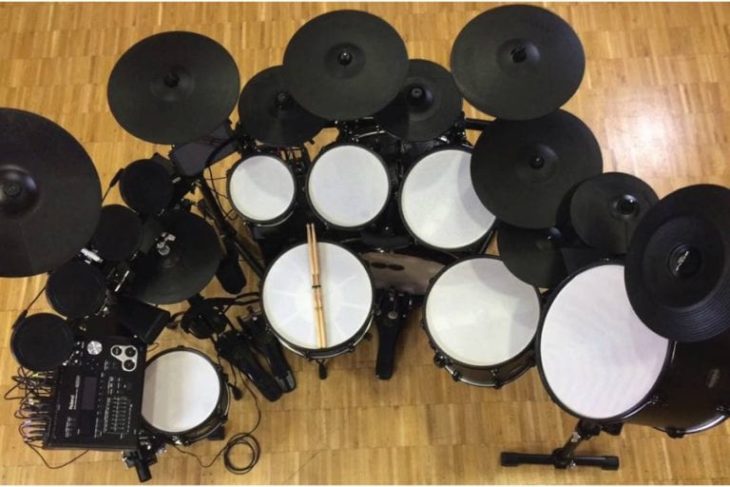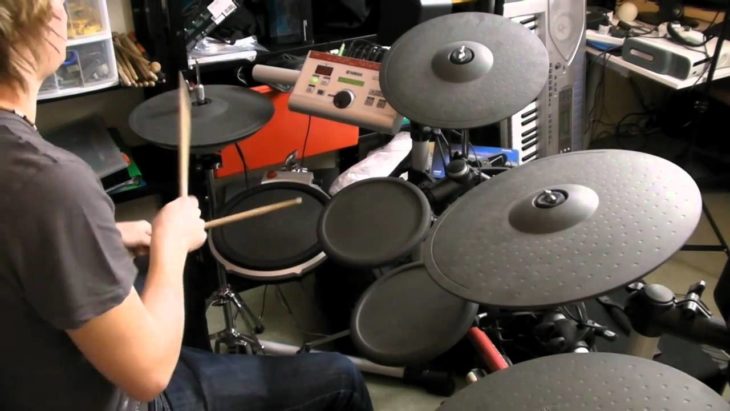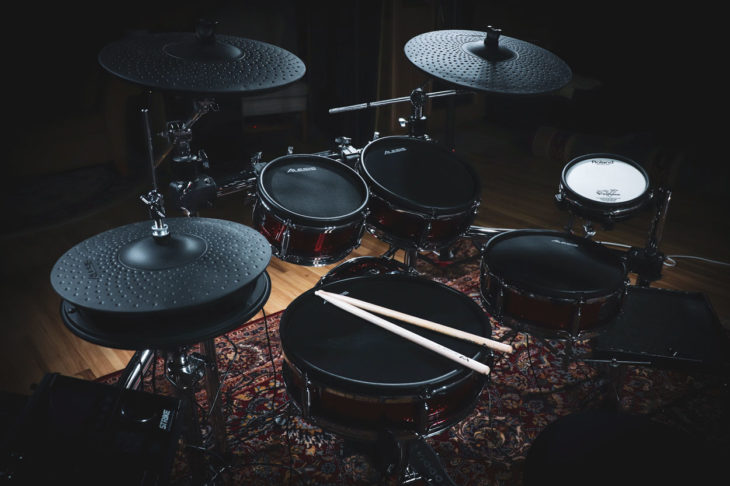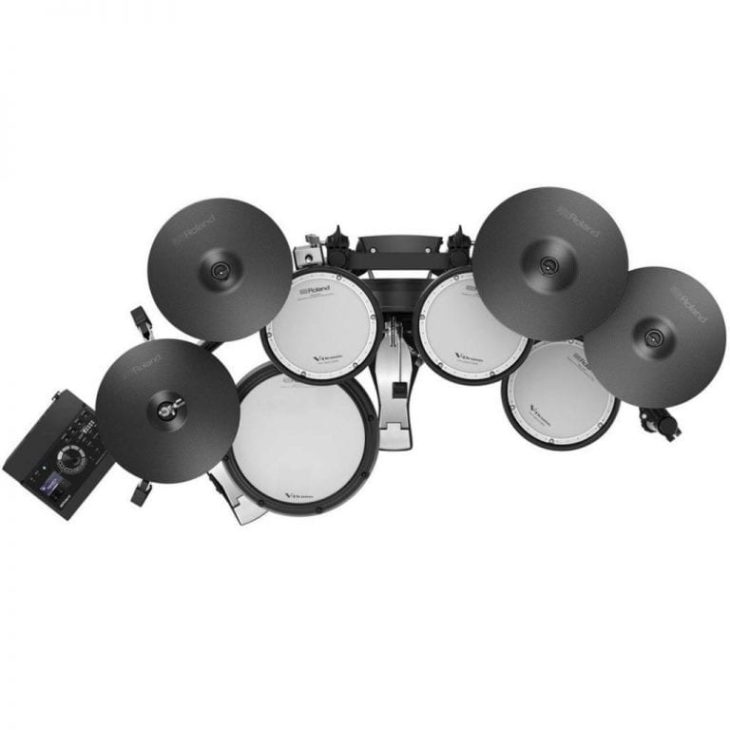Although many electronic instruments are seen as equal or even superior to their acoustic counterparts, many people have questions when it comes to electronic drum sets.
In this article, we’re going to dive into the actual differences and help you decide if they are for you.

Source: thoroughlyreviewed.com
Sound Quality
Acoustic kits and cymbals have a rich timbre of sound that is quite difficult to simulate electronically. Though, professional electronic drum sets are starting to come incredibly close (for example, the Yamaha DTX900 series or the Roland TD-50) to the real thing while also supplementing it with many different other sounds and features.
Beginner electronic drum sets come with a trade-off, you get all the essential sounds of an acoustic set but you end up missing the subtle sounds that you could get from a real set.
Electronic drum sets shine in the variety of great sound. Most of their modules come with numerous different kit styles that can allow you to have a much more versatile sound. To compare the sound quality and features of these then check out this article on electronicdrumadvisor.com.
Let’s imagine you are playing for an electronic dance group. The kick on a real drum kit can often be lacking unless you have a great sound engineer, miking, and a good room. For the electronic drum set, you simply just use a ‘club kick’ and it will fit right into the group. It’s not going to sound exactly like an acoustic set, but drums in electronic music rarely sound like a real kit anyway!
Learning
Can you learn how to play drums using an e-kit? You can surely learn the basic beats, where everything is, and techniques. Electronic sets are also so much quieter than their acoustic counterpart that you can often practice for much longer and without annoying your family!
Most electronic drums can fall a little when it comes to the subtleties of playing. It all depends on the style of music that you’re interested in getting into most. If you want to become a Jazz player than you will need either a very high-end electronic set that replicates the feel of a real set or just go with an acoustic set.
E-drums are a great option for anyone interested in rock, pop, dance, funk, Latin and many other genres. Most of the better sets also allow double bass pedals, which metal fans will be very happy to hear!

Source: YouTube
Price
The price of these vary a lot and there is no clear winner. Drums can become very expensive no matter what avenue you take. Both types of beginner sets are a few hundred dollars and top professional sets range into the thousands.
Recording
Electronic drum sets are far superior when it comes to the ease of recording, excluding the difference in sound quality and timbre. The modules of these usually have an audio output that you can route straight into a mixer. They also usually have MIDI that you can use to sync or record other sounds.
Acoustic drum sets are notoriously awkward to record.
For a good recording session, you need numerous microphones, all mounted incorrect places, a large mixer or audio interface, and a recording engineer that’s worth their salt. If you have your own studio space and the ability to permanently have your microphones on your set, then it’s worth the hassle and investment to set up. Though most people don’t have that luxury.

Source: Drumming Review
Loudness
I was thinking of excluding this point because it seems so obvious. Electronic drums are far quieter than the real thing. If you have a good sound-proofed studio space then this would not be a problem.
If you’re living close to other houses then a real kit might need to be heavily dampened and suppressed in sound. If you need to heavily dampen the noise, then it takes away much of the sound quality and playing feel.
The look
Real drum sets have that characteristic epic look on stage. Traditional electronic sets are small and don’t have the presence of these. Though professional sets are starting to have that presence, for example, the higher versions of the Roland TD-50 include a full acoustic kick that has a triggered skin. Pretty cool, and possibly the best of both worlds!

Source: Fleet Pro Sound
The feel of playing
This is an area where the real kit wins outright. When you hit a real drum head, you can get feel a big response. For example, if you’re on stage and you hit a big drum, you can feel the vibration go up to your body. It’s quite a cool feeling and really adds to the experience of playing these. Even if both types of sets sounded almost the same to the audience, there might still be a difference in the experience of the drummer.
There is one way that you can tackle this. There are devices that you can hook into your throne that reverberate based on external sounds. People also use these for home cinemas to add to the feeling. It doesn’t exactly match the real thing, but it can add that missing element of the performance.
Conclusion
Although the best electronic drum sets are coming ever so closer to the real thing, there will still be differences in sound, feel, and presence. However, e-drums offer a variety of sounds, convenience of rehearsing and recording, and a bunch of other features that might make them more attractive to you. I hope this article cleared up some of your questions about the differences between them.
